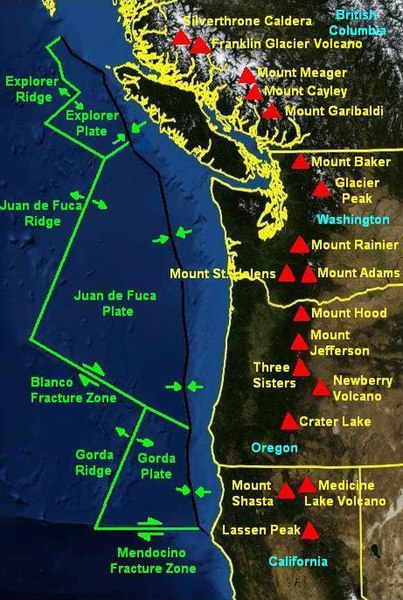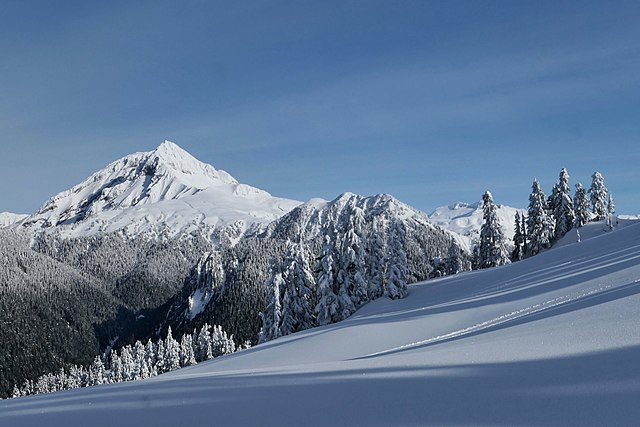Mount Baker, also known as Koma Kulshan or simply Kulshan, is a 10,781 ft (3,286 m) active glacier-covered andesitic stratovolcano in the Cascade Volcanic Arc and the North Cascades of Washington in the United States. Mount Baker has the second-most thermally active crater in the Cascade Range after Mount St. Helens. About 30 miles (48 km) due east of the city of Bellingham, Whatcom County, Mount Baker is the youngest volcano in the Mount Baker volcanic field. While volcanism has persisted here for some 1.5 million years, the current volcanic cone is likely no more than 140,000 years old, and possibly no older than 80–90,000 years. Older volcanic edifices have mostly eroded away due to glaciation.
Mount Baker as seen from the Southeast at Boulder Creek
The east side of Mount Baker in 2001. Sherman Crater is the deep depression south of the summit.
Mount Baker from Oak Bay, British Columbia, 1903, Photo: Charles Edward Clarke
Mount Baker, photographed from English Bay, looms over the residential towers of downtown Vancouver
The Cascade Volcanoes are a number of volcanoes in a volcanic arc in western North America, extending from southwestern British Columbia through Washington and Oregon to Northern California, a distance of well over 700 miles (1,100 km). The arc formed due to subduction along the Cascadia subduction zone. Although taking its name from the Cascade Range, this term is a geologic grouping rather than a geographic one, and the Cascade Volcanoes extend north into the Coast Mountains, past the Fraser River which is the northward limit of the Cascade Range proper.
Mount Rainier from the northeast
Image: Cascade Volcanic Arc
Lassen Peak and Devastated Area from Cinder Cone
Mount Garibaldi as seen from the south








